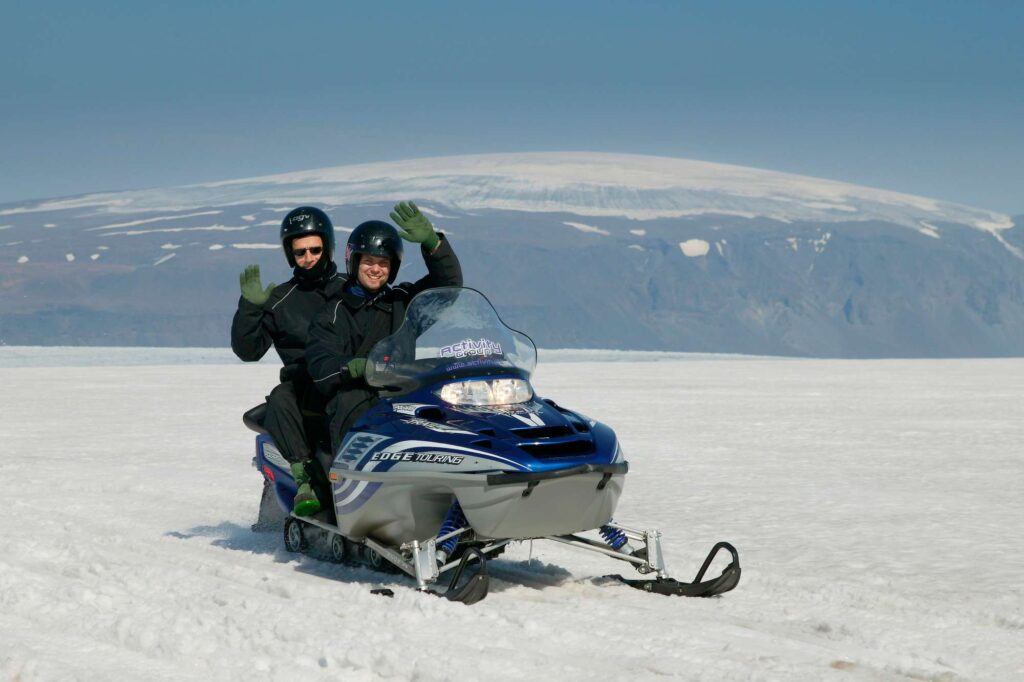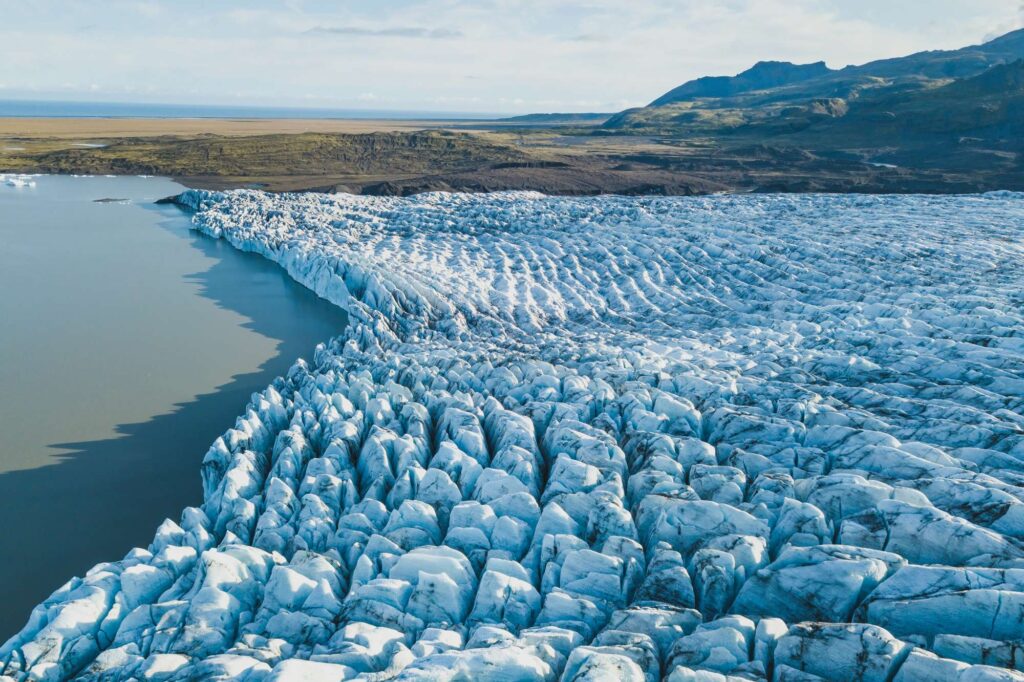
Your Guide to Touring Iceland’s Glaciers
Iceland is a land of extremes, from the heat of the volcanoes that are dotted across the country, to the stark cold beauty of the glaciers. Iceland is home to some of the most breathtaking scenery in the world. One of the most attractive reasons to visit Iceland is the opportunity to take in one of nature’s great formations – the glacier. Glaciers are essentially enormous rivers of ice that form when snow stays long enough in one place to compress and become ice.
Glacier hiking excursions are a fantastic chance for adventurous souls to witness spectacular scenery that couldn’t be more different from England’s landscape. Here, we’ll answer some questions about glaciers, and how to get the most from your trip.
Can you see glaciers in Iceland in Summer?
Glaciers are popular attractions all year round in Iceland, and there are many tours and hikes available during the summer months. From snowmobiling across Langjokull, to hiking over Solheimajokull, you can enjoy this icy atmosphere even during the height of summer.
Can you walk on glaciers in Iceland?
Walking on a glacier is an experience that is hard to match. Although you need special equipment and a knowledgeable guide, the actual journey does not need to be particularly difficult. A well-prepared guide will be with you to help you navigate the dramatic terrain.
You can enjoy a walk on many of Iceland’s glaciers, including Sólheimajökull, part of Mýrdalsjökull, or Svínafellsjökull, which is in South Iceland and makes up part of part of Vatnajökull.
What is the biggest glacier in Iceland?
Vatnajökull is the largest glacier in Iceland as well as being the largest glacial mass in Europe. Covering an area of over 8000 square kilometres, it stretches out as far as the eye can see, with ice as thick as 1000m in some areas. However much of it is accessible so you can see a mind-blowing landscape of endless white.
In 2008, Vatnajökull was declared a national park. Combining Vatnajökull with Skaftafell in the south and Jökulsárgljúfur in the north, the Vatnajökull National Park now covers a huge 13% of Iceland. It has become a popular spot for filming as well, having been featured in Bond’s Die Another’s Day and Game of Thrones.

What type of glacier is Vatnajokull?
Vatnajokull is commonly known as an ice cap. Ice caps are dome-shaped masses of ice that are usually larger than an icefield but certified as less than 50,000km squared. If it is larger than that, it is classed as an ice sheet – such as those found in Antarctica and Greenland.
What is the closest glacier to Reykjavik?
Langjökull is close to Reykjavik, about two hour’s drive away. Nicknamed ‘the long glacier’, this lunar-like location is the second largest ice cap in Iceland. Beneath its stark white surface lies another of Iceland’s natural wonders: volcanoes.
Langjökull is also home to the world’s largest man-made ice cave. Designed by passionate tour operators and a team of engineers and glacier experts, this cave takes visitors over 2,600ft into the heart of the glacier. You can explore the ice cap and ice cave joining a guided excursion on an 8WD super-truck departing from nearby Husafell or Reykjavik. If you are up for some adrenaline-inducing fun, try snowmobiling on a glacier!
How far is Vatnajokull glacier from Reykjavik?
Due to the immense size of the Vatnajokull glacier, it can be difficult to give an accurate travel time but the journey is around 250km. If you are driving from Reykjavik, the area of Vatnajokull you are likely to be visiting is Skaftafell National Park, which is about four hours’ drive. We would recommend visiting as part of a multi-day holiday exploring the south (though full day excursions are available).
There are glaciers close to Reykjavik, however, including Langjökull near Húsafell and Snaefellsjökull by Arnarstapi in the west, the former taking just under two hours and the latter around two and a half hours by car. Luckily, there are many different ways to experience glaciers in Iceland.

Is glacier hiking hard?
Glacier hiking is different from normal hiking, but it can be done by most people as long as you have a basic fitness level. If you are comfortable walking on uneven or hilly ground, you should adapt to ice walking without much trouble. As glaciers are constantly moving, they are also constantly changing shape, so every hike will be slightly different. Glaciers hikes are not generally steep, but there are often deep crevasses that might cause a bit of apprehension for people with a fear of heights. Your guide will help you traverse the glacier safely as well as teaching you the way to walk with crampons (the spiked metal plates that attach to your hiking boots).
What do you wear on a glacier hike in Iceland?
Consider taking a few layers, including a long-sleeved shirt and thermal leggings as a base layer, an insulating middle layer, and a shell layer that could be removed if you get too hot. With regards to footwear, a good quality pair of hiking boots worn with thick insulating socks should be sufficient. You should also take a scarf and gloves, but don’t forget your sunglasses! The reflecting light is extremely bright and even more so during summer.
Glacier hiking during Iceland’s summer months won’t leave you as cold as you might think. The climate between June and August will be relatively mild, but still somewhat unpredictable and possibly windy. You could have warm sun one minute, then snow showers the next, so it is best to pack with versatility in mind.
Ready to explore Iceland’s glaciers? Discover more about our Iceland holidays and tailor made trips or give us a call on 01737 214 250 to talk with our experts.



 Instagram
Instagram
 Facebook
Facebook
 YouTube
YouTube